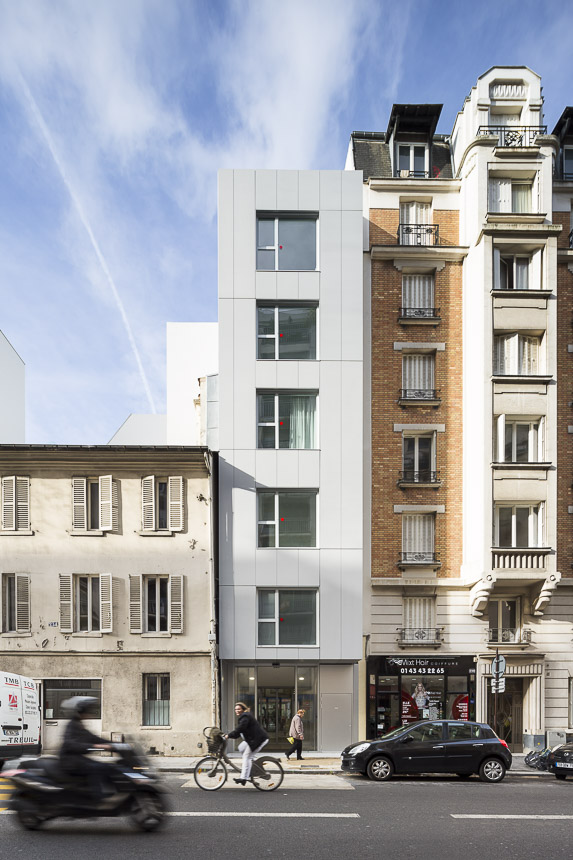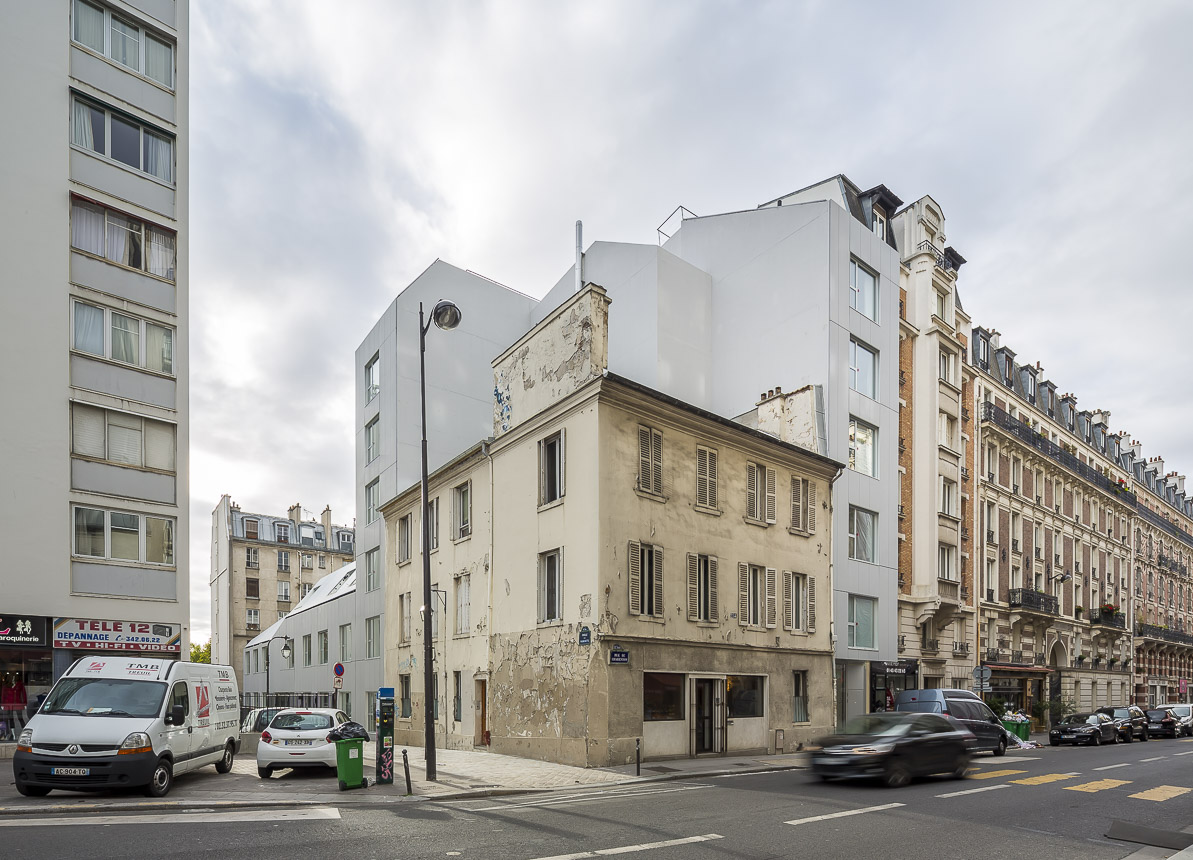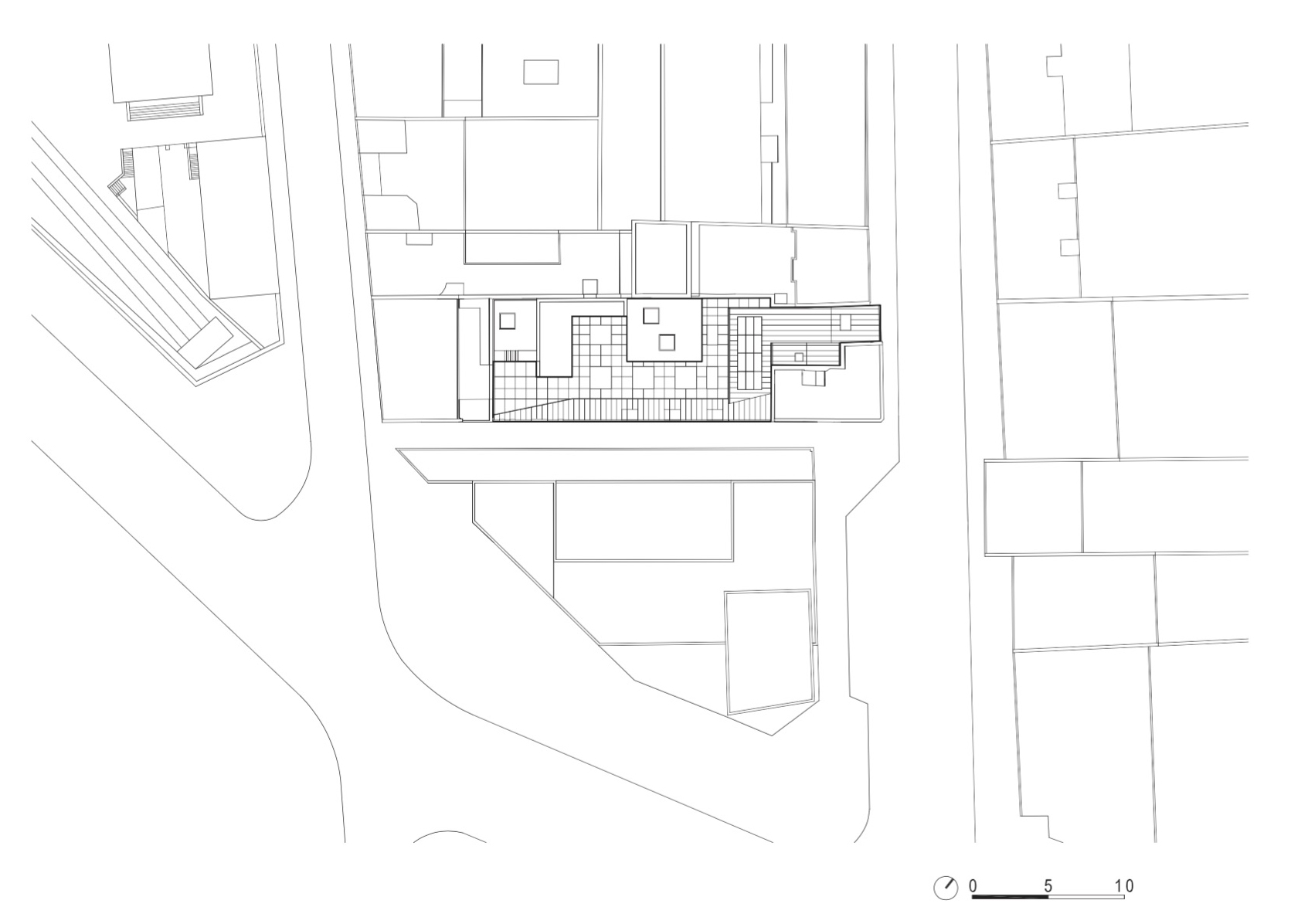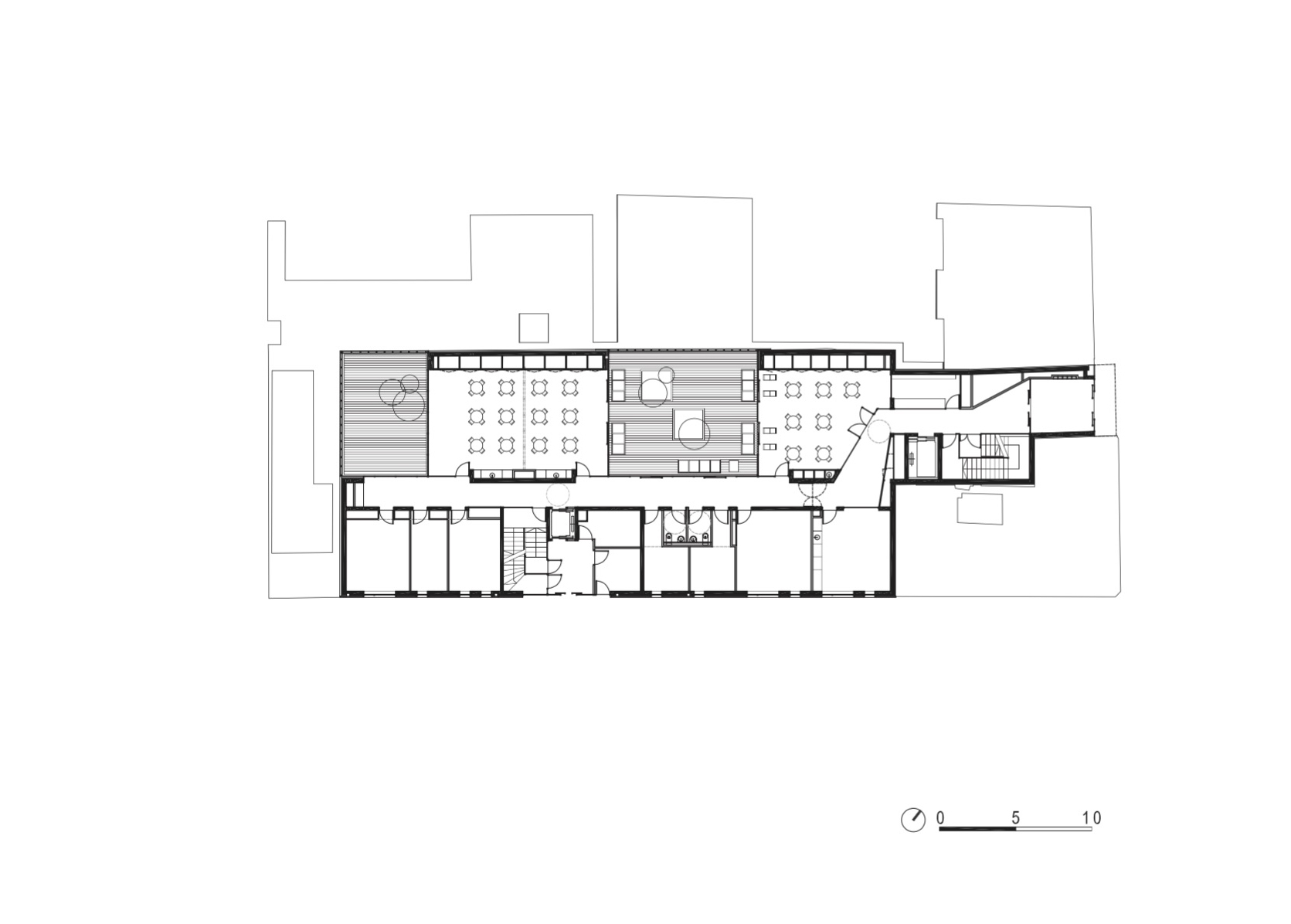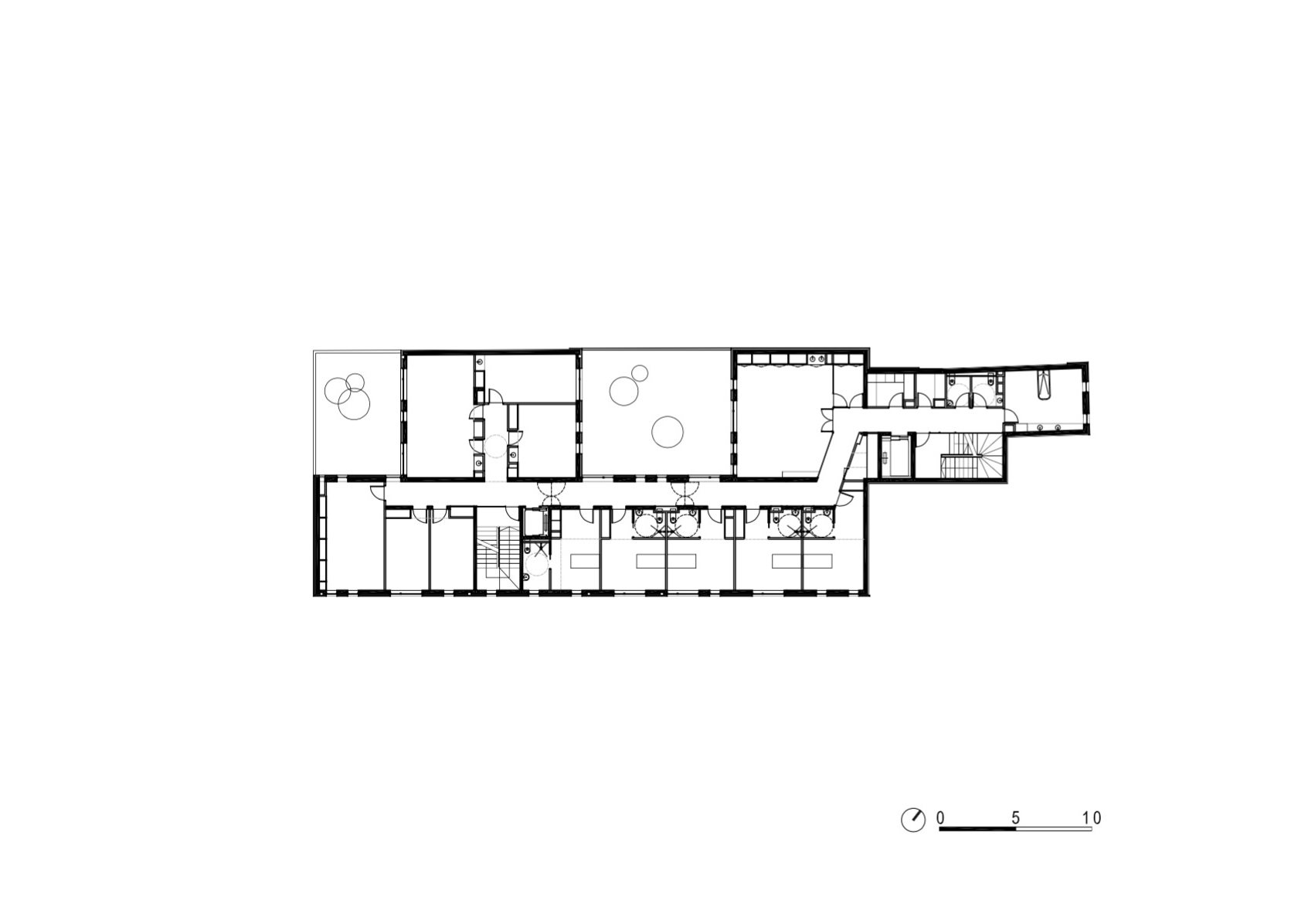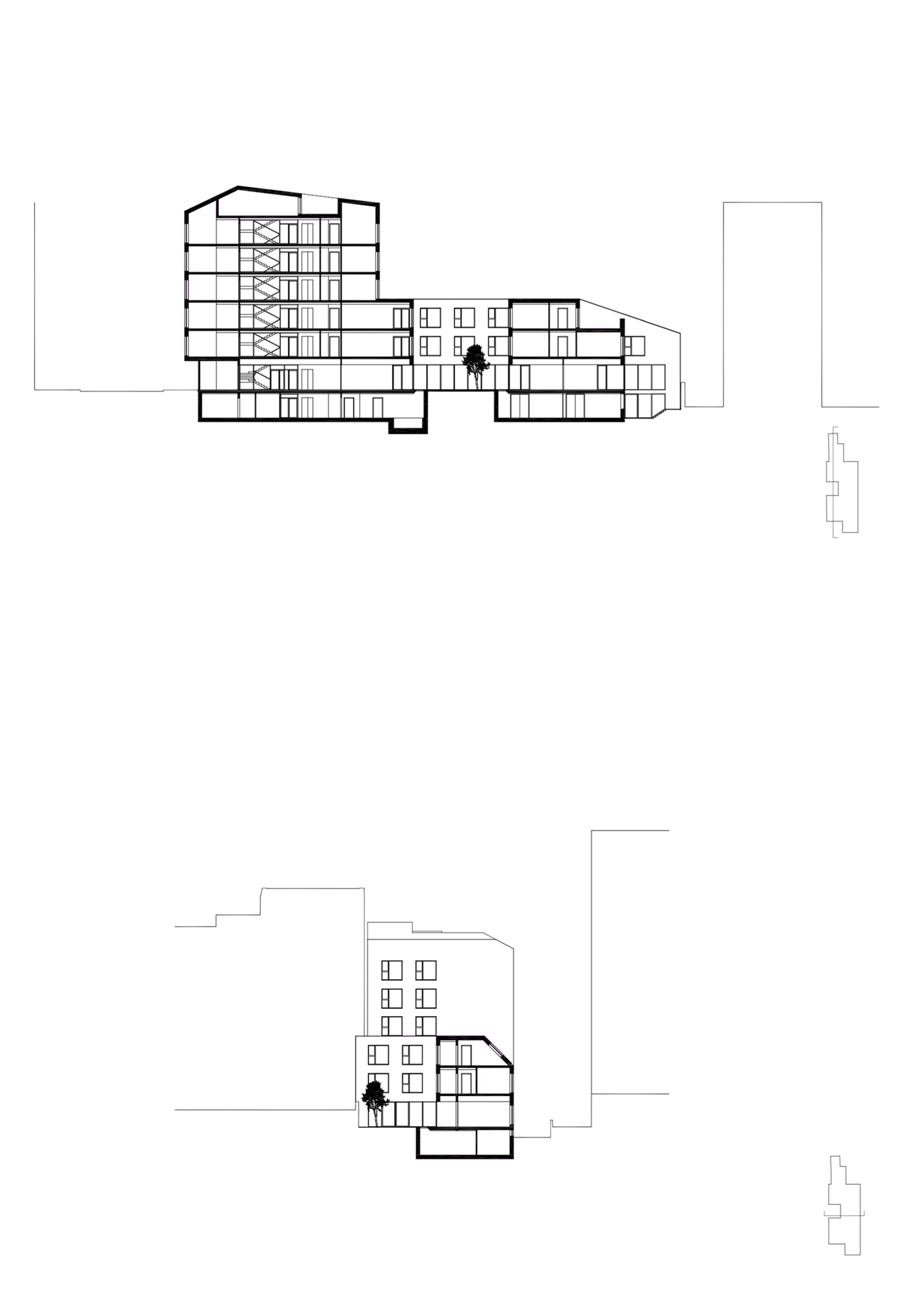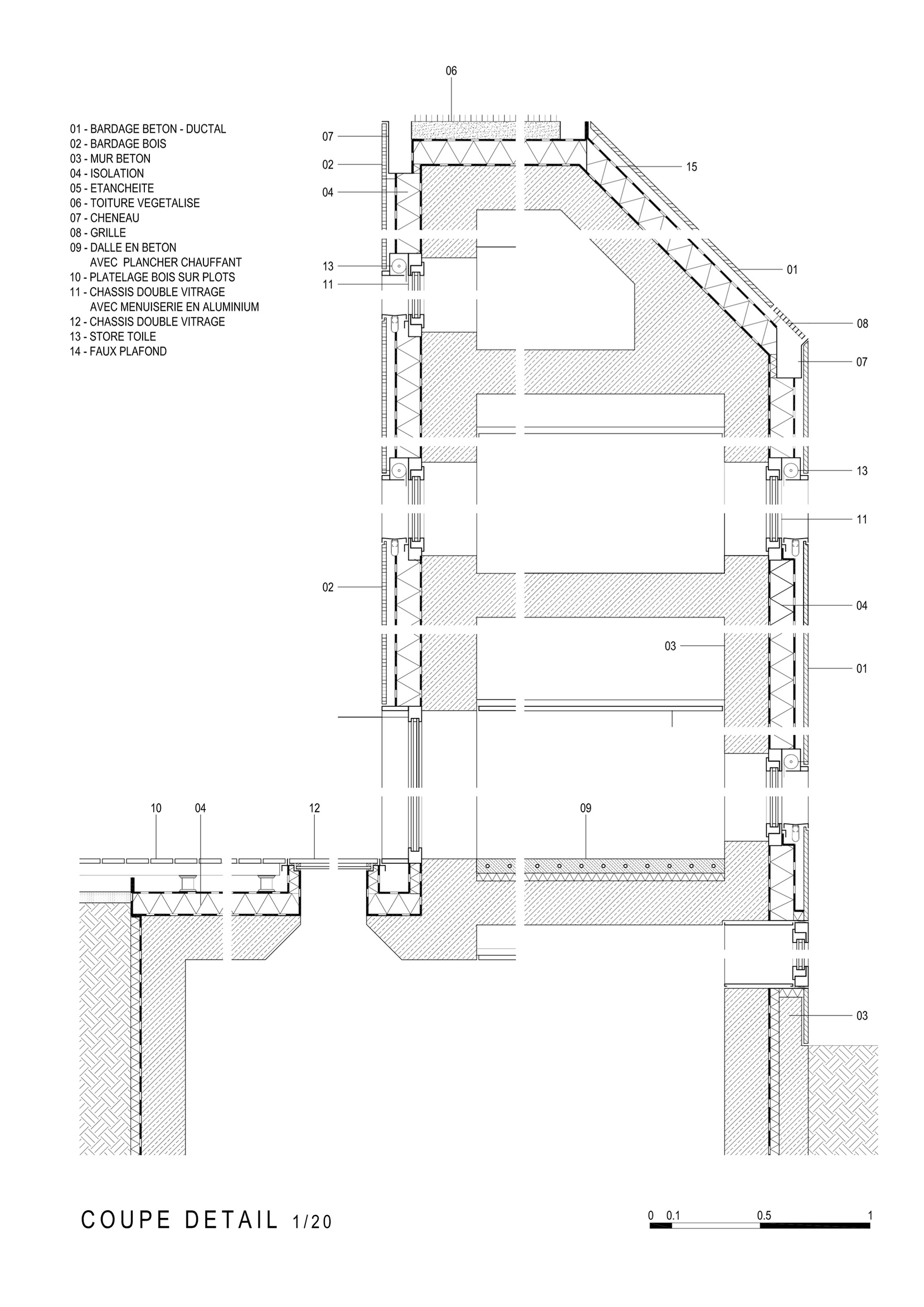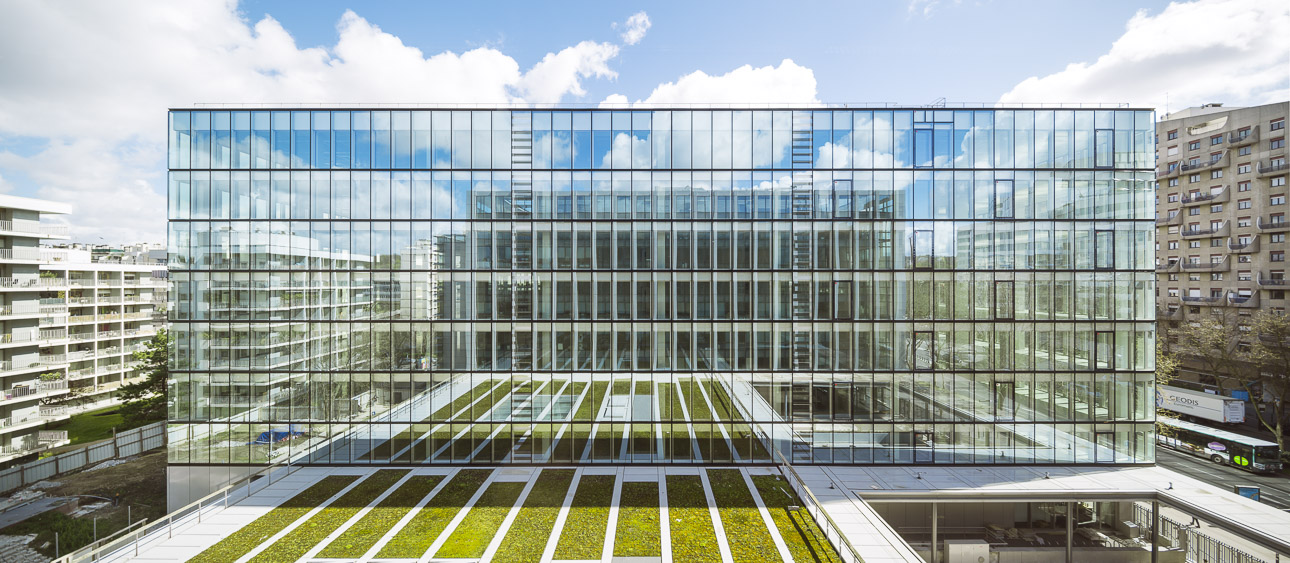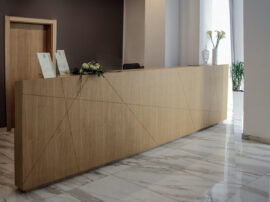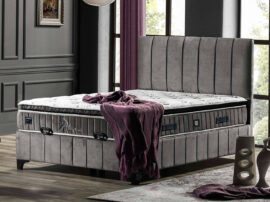The site is surrounded by high buildings that cast their shadows, and cramped by a house on the corner whose owner refuses to sell. Nonetheless, the orientation is interesting and planning laws are moving in the right direction. To the north, on the Rue de Charenton, we were able to build to six storeys, to the south, at the heart of the block, up to three storeys.
As with all historical urban environments, planning regulations left no flexibility in terms of defining the height, width and length of the building. The resulting volume faithfully transcribes the layers of restrictions: the minimal access from the Rue de Charenton, extending back into the block where it is calm and protected, gives a position between street and garden with, above all, a large part of it in full sun at the height of summer.
On the Rue de Charenton, the generous height allowances and the shape of the site led us to design volumes of surprising proportions, which fold along the roofline. On the Ruelle de la Planchette, the upper part of the aligning facade folds in, scrupulously following the volumes permitted.
The smooth external skin faces onto the city. Generously proportioned windows, almost square, provide maximum light and transparency in all the internal spaces, a luxury in Paris.
The height of the neighbouring buildings gives them plunging views over the site. With this in mind, every detail of the building was carefully studied to ensure that they fitted in and were pleasant to look at.
In both the design and its realisation, we opted for a building that is sober and adaptable, conceived in terms of real-life usage over the long term. We took into account the possibility of future extension in the event of acquiring the corner house.
The first consideration regarded contact with the outside world. The quality of the envelope and exterior openings is essential in ensuring the quality of a building. Large windows create a relationship between the internal spaces and the city and neighbourhood.
The second consideration concerned opportunities for interaction within the building. We strove for transparency at the heart of the site, for the quality of the communal and circulation spaces, which are designed as largely glazed walkways providing opportunities for residents to see, meet and interact with one another. These circulation spaces are a determining factor in the quality of life in shared accommodation.
The third consideration took into account the layout of the different functions. The building houses several different functions, as well as the private living units – communal areas, easily accessible spaces for activity and leisure, and work areas for the staff.
Finally, if the question of energy is fundamental, so, obviously, are questions of well-being, comfort and health.
Large, central glazed areas, including the main patio, which is itself an ‘outdoor room’, help to maintain transparency throughout the ground floor.
At the semi-basement level are the service areas, for maintenance, laundry and staff, lit by daylight. In the central zone, three large activity rooms are organised around the central patio, from which they receive natural daylight.
Repeating the same configuration of circulation space for each floor of the building, we created an efficient means of arranging the various areas. We distributed the 26 housing units on the upper floors, feeling that ground-floor bedrooms would not be agreeable.
The patios are places for contemplation, like Japanese patios. They are the points towards which views from the communal living areas are directed.
Circulation ceases to be a ‘corridor’, instead becoming a ‘route’. One passes from one point in the building to another looking outside.
Project n°: 48
Name: PLANCHETTE SHELTERED HOUSING
Program: Medical reception center for disabled persons
Adress: 232 rue de Charenton au Roi et 3-5 ruelle de la Planchette 75012 Paris, France
Client: Elogie
Client contact: Yannick BIGER : +33 (0)1 78 41 50 31
User: La Fondation des Amis de l’Atelier
Architects: AZC
AZC team: Grégoire Zündel, Irina Cristea, architects;
Valentine Jamet and Stefano Lunardi, project’s managers and Cécile Conduché.
Partners: OTE ingénierie
Missions: Conception + Construction
Status: Completed
Year: 2015
Cost: 10,6 M€ for a work cost of 7,5 M€ TTC
Surface: 2250 m²
Labels: HEQ process
